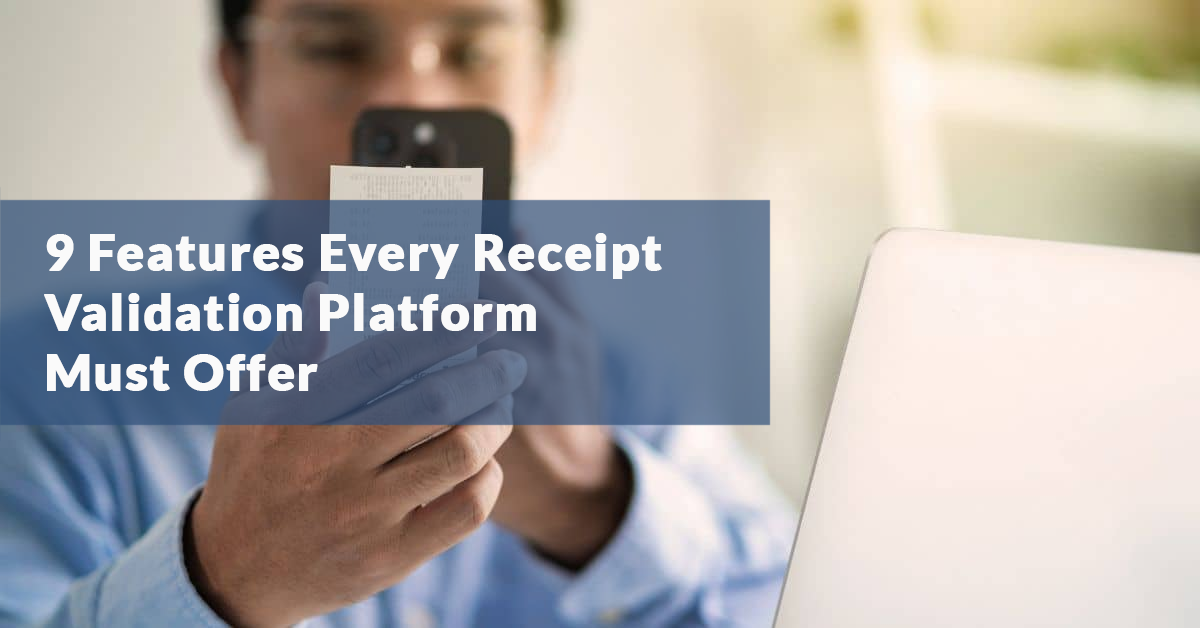One major driver of customer engagement and retention is continuously providing value—and having customer data to understand what they want and need in your products and brands helps you create that value. As customer data laws are changing around the world, let’s talk about the different types of data, and how you can collect and utilize this data.
Different Types of Customer Data & What They Mean
When we’re talking about “party” customer data, the party being referred to is the source that collects and provides the data. There’s three different “parties” you can collect data with to learn more about your customers and their purchasing habits:
Third-Party Data
Many marketers and brands utilize third-party data. In short, third-party data is aggregated data from various sources, such as websites or social media networks, that are not owned by your company, nor provided explicitly by the customers. Third-party data is often used for personalizing offers or communications from brands, and it can help with targeting.
Third-party data is typically demographic or firmographic information, but can include data like buying signals or additional details that may be found in the source of the data.
First-Party Data
First-party data is data your brand has collected itself from sources it owns, such as your company website or CRM. Depending on the data collection systems you have, you can collect and analyze various first-party behavioral data, such as:
- Site page activity, like pages viewed, clicks, hovering, scrolling, and active time on page
- Session context and how users engage with personalized experiences
- Transactional data, such as purchases and downloads
- Email subscriptions, opens, and clicks
First-party data helps marketers understand consumer intent and their interests. With first-party data, even if a customer doesn’t make a purchase, you can learn more about their intent based on the actions they did take on your site.
Zero-Party Data
Zero-party data is a term coined by Forrester that encompasses data “a customer intentionally and proactively shares with a brand.” This type of data includes valuable contextual data that helps brands truly understand their customers. Zero-party data includes information like:
- A customer’s personal context
- Purchase intentions
- How customers want brands to recognize them
- Customer preferences
Zero-party data is the most reliable and accurate data, because it’s directly and freely offered by the customer, through methods like surveys, reviews, and loyalty or promotional programs. Customers who provide zero-party data expect their information to be protected, and they expect a highly-personalized experience with your brand—so brands collecting zero-party data need to be proactive and effective in utilizing it.
The Death of the Third Party Cookie & What it Means
Third-party cookies, which have been a mainstay of many brands’ digital strategies, are on the way out, amid privacy concerns from internet users worldwide. Google has announced plans to phase out third-party cookies on their Chrome web browser—which is the preferred web browser for 65% internet users—by 2022.
Safari and Firefox browsers did away with third party cookies in 2013, but Google’s latest move affects every brand currently using third-party cookies. The Google phase only applies to third-party cookies, so don’t worry about losing the first-party data you collect on your website!
What You Can do for Your Brand & Customers
While third-party cookies have been useful to advertisers for retargeting efforts, overall, the relationships and trust that brands can develop through first and zero-party data are far more insightful and valuable to brands.
When you’re getting your data directly from customers through first and zero-party data, you have more accurate data—and it’s often highly specific versus the general information you get from third parties. This means you have the specifics of what your customers are doing, what they’re buying, the offers they engage with, and even how they feel about your products or use them in ways you may not expect.
This type of specific data helps you build relationships with your customers and have more insight into what provides them the most value. When you have a deeper understanding of your customers and can easily pivot your marketing and programs, you’ll be able to create continuous value that drives engagement and turns customers into brand ambassadors.
How to Collect First & Zero-Party Data
We’ve mentioned some of the ways your brand can collect first-party data, namely through interactions on your website and transaction data. While website data is important for building a complete picture of your customer’s journey, leveraging channels, like loyalty programs and promotions, will help you better understand purchase habits and tap into the gold mine of zero-party, customer-provided data.
Some simple ways to start collecting first party data are:
- Utilizing tracking features on your website - or tools like Google Analytics or heat mapping - to understand how site visitors use your site or interact with your brand online
- Monitoring emails analytics like emails opens, clicks, and subscription rates
- Analyzing the data collected by your CRM or transactional data you have for trends or behavioral patterns
Some simple ways to start collecting zero-party data are:
- Send out a survey for customer feedback
- Look for feedback or reviews customer have already left online
- Employee social listening and see what people are tagging you in on social media and what they’re saying about your brand
Radeberger Testing & Running Promotions Easily with Snipp 365 for Zero-Party Data
When you’re collecting zero-party data from customers—like their opinions and preferences—you have to use it to make informed decisions for your brand and improve your customers’ experience. Collecting data without analyzing and utilizing it is literally throwing money away.
However, if you’re new to zero-party data, you’ll have to run some trial and error to find what your customers like best and what to participate in. Radeberger wanted to test out what promotions and rebates worked best with their customers, and they partnered with Snipp to leverage our 365 offer that allows them to run any number of different promotions to test what was more enticing for their customers.
The Snipp 365 offer helps Radeberger run any number of contests and promotions programs, such as gift with purchase, sweeps, pin-on pack, instant wins, punchcard, rebates, text-based programs, etc. to collect data on which type of activations work the best. From there, Radebeger can use the data to run the most effective promotions to their different audiences.
Gift With Purchase Utilizes Receipt Processing & Customer Data Collection for Nesquik
When you want customer data, you have to offer something in return. Rewards and loyalty programs are rife with opportunities for customer data, in addition to driving sales and keeping customers engaged. Nesquik was looking to try a new type of promotion that also helped them collect more purchase data from customers to inform their CRM strategy, as well as driving sales.
Utilizing Snipp’s receipt processing platform, Nesquik and Snipp developed a gift with purchase program where customers who made a qualifying purchase uploaded a photo of their receipt via text or email to get a gift card. Snipp was also able to integrate with Nesquik’s CRM to seamlessly add data from the promotion to their database.
Power of Receipt Processing for Customer Data
Receipt processing is an important tool for validating purchases for rewards programs like Nesquik’s, described above, but it also helps you collect customer data you might not otherwise have access to—like total basket size and purchasing habits outside of what they buy from your brand.
Receipt data is a goldmine for brands to understand trends and customer behavior like:
- Basket size
- Total receipt spend
- Purchase frequency
- Product combinations
This information can help your brand understand purchase intent, find new partnership opportunities with brands your customers buy together, or develop new products and promotions based on what your customers actually want.
Learn more about the power of receipt processing.
How Marketers Can Leverage First & Zero-Party Data with Snipp
At Snipp, we understand that brands don’t just need first and zero-party data—they need the power to analyze and understand it easily and pivot their programs accordingly. Our solutions, SnippInsights and SnippCheck, give you powerful real-time zero-party data collection capabilities alongside tools to build robust, proprietary data sets that enable intelligent decision making to drive personalization and brand loyalty.
Analyze & Understand Zero-Party Data with SnippInsights
SnippInsights allows brands to tap into unprecedented information about your customers and their purchase habits. With SnippInsights, the data generated by your Snipp programs is now readily available and organized with just a few clicks, helping you better understand what your consumers are buying, why they're buying, and what you can do to keep them buying.
SnippInsights features a robust set of off-the-shelf reports, powerful analytical tools, and data visualizations that help make sense of complex consumer behaviors and purchase patterns collected from our industry-leading receipt processing engine, SnippCheck.
Basket Analysis & First-Party Shopping Data from SnippCheck
We also provide an advanced level of basket analysis captured from first party shopping data through SnippCheck, our market-leading receipt processing engine, in POS devices and tied to in-store promotions. This includes transcription, brand identification, and categorization of receipts summarized in an interactive, dynamic report.
This advanced report helps make sense of complex consumer behaviors and purchase patterns at the product, brand, or category level. This invaluable information can be turned into actionable insights, as well as helps brands measure the effectiveness of marketing campaigns, enabling intelligent decision making.
Third-party cookies are a thing of the past. Get to know your real customers with first and zero-party data through Snipp’s Customer Acquisition, Retention, and Engagement platform. Contact us today to see how we can help your brand collect and leverage meaningful customer data for engagement and retention!







